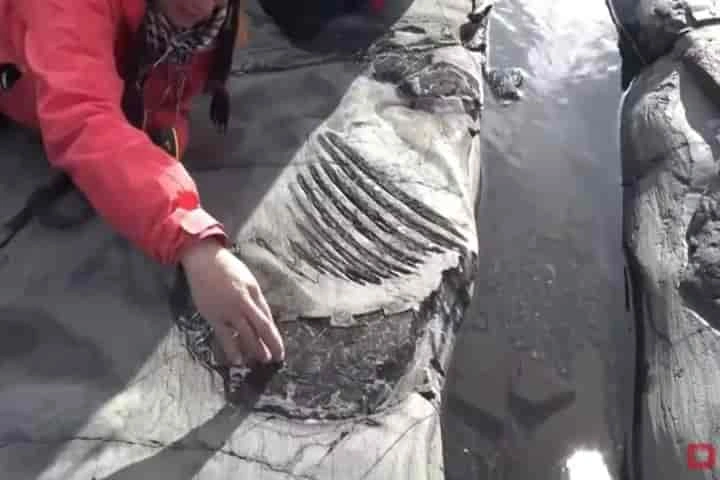Chilean palaeontologists made a rather rare find when they unearthed a fossil of a pregnant ancient reptile, called ichthyosaur. Reporting this an article in livescience.com said that this creature which resembled a dolphin was the first of its kind to be found in Chile where it was recovered from a site close to Tyndall Glacier in the Southern Patagonian Ice Field.
Talking to Live Science, Erin Maxwell who is an ichthyosaur specialist and curator of marine reptiles at the State Museum of Natural History in Stuttgart, Germany observed: "This site is really unique, because it’s capturing a time period in Earth’s history where we don’t have a very good fossil record for marine reptiles.”
Maxwell helped to dig out the fossil.
WATCH: Chilean paleontologists recovered the fossil of a pregnant marine reptile named ‘Fiona,’ one of the world's most complete ichthyosaur fossils, from the Tyndall Glacier in Chile's Patagonia region https://t.co/wQLyE5svfD pic.twitter.com/1KmDzNwe9a
— Reuters Science News (@ReutersScience) May 12, 2022
It was in the early Triassic period – 251 million years ago – that Ichthyosaurs or fish lizards ruled the seas. They existed with dinosaurs till about 95 million years ago. The diet of these reptiles included ancient, hard-shelled squid relatives, some varieties of fish and smaller ichthyosaurs.
The smallest among this species was 1.3 feet while the biggest were 69 feet right from the snout to tail. The one found at Tyndall at 13 feet can be described as medium-sized and it dates to 129 to 139 million years ago. This would be the early part of the Cretaceous period – the duration of which was between about 145 million to 66 million years ago.
In 2009 it was Judith Pardo-Perez, a palaeontologist in Maxwell’s group who found this fossil. Now, a researcher at the GAIA Antarctic Research Center, University of Magallanes in Punta Arenas, Chile, Pardo-Perez and her colleagues named the fossil “Fiona” after ogre character Cameron Diaz played in the film “Shrek”. The reason was that the preservative oxide coating on the fossil had turned it green.
Also read: How did scientists and artists reconstruct a 160 million years old fish lizard?
Fiona’s fossil is a very useful one for palaeontologist as it provides insights into the different stages of the life cycle of the species. Highlighting this, Maxwell said: "We can tell, for instance, how many embryos those species might have had, and how large they were at birth.”
It was in 1749 that the first ichthyosaur fossil which was pregnant was found and it was described scientifically in 1842. This fossil established that ichthyosaurs gave birth to live young and did not lay eggs.
Such important finds Maxwell hopes will spur interest in palaeontology in South America. Till now sites in North America, Russia, China and Western Europe have been favoured for exploration. "We really only have a picture of what’s going on in half the globe for the Mesozoic [252 million to 66 million years ago]. So these finds are very, very important to help bring a global perspective to our understanding of Cretaceous oceans,” Maxwell remarked.




















